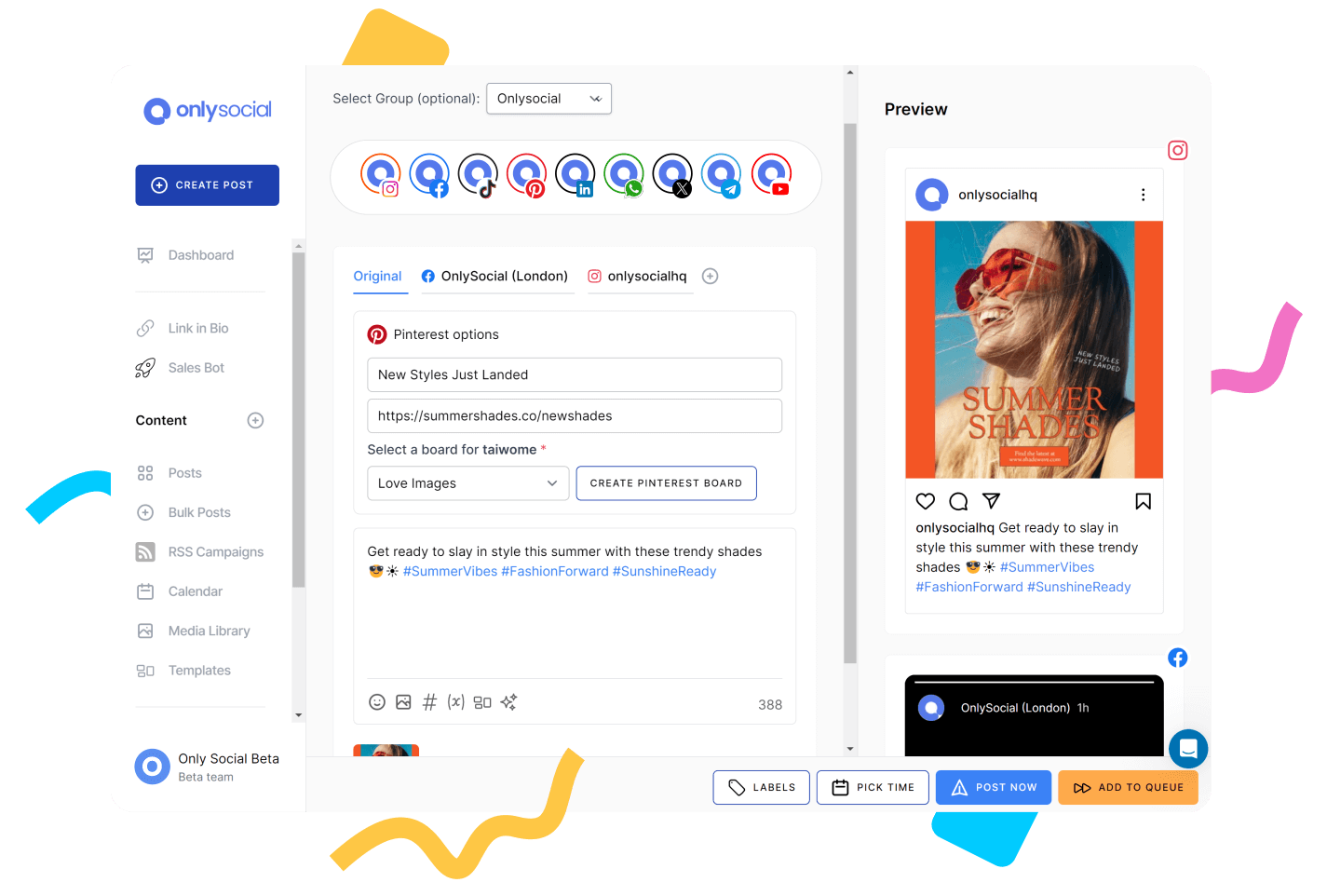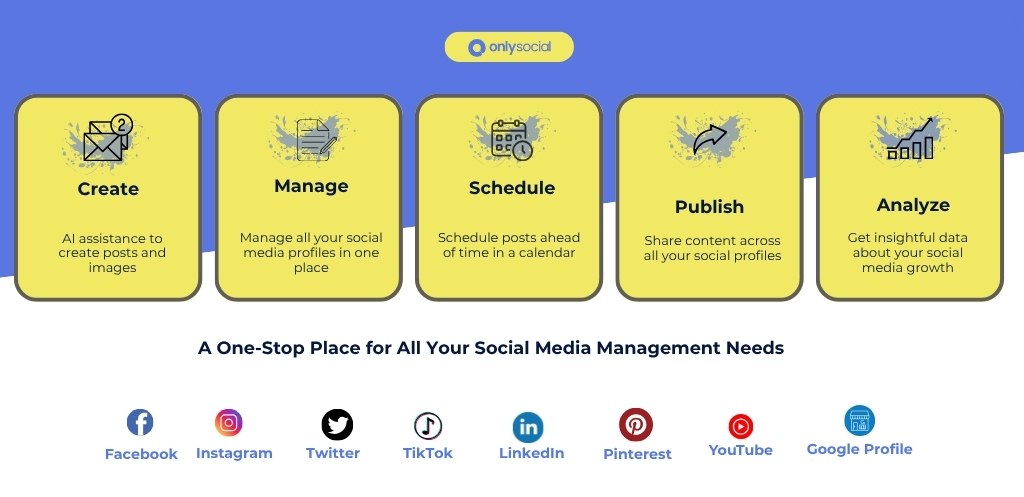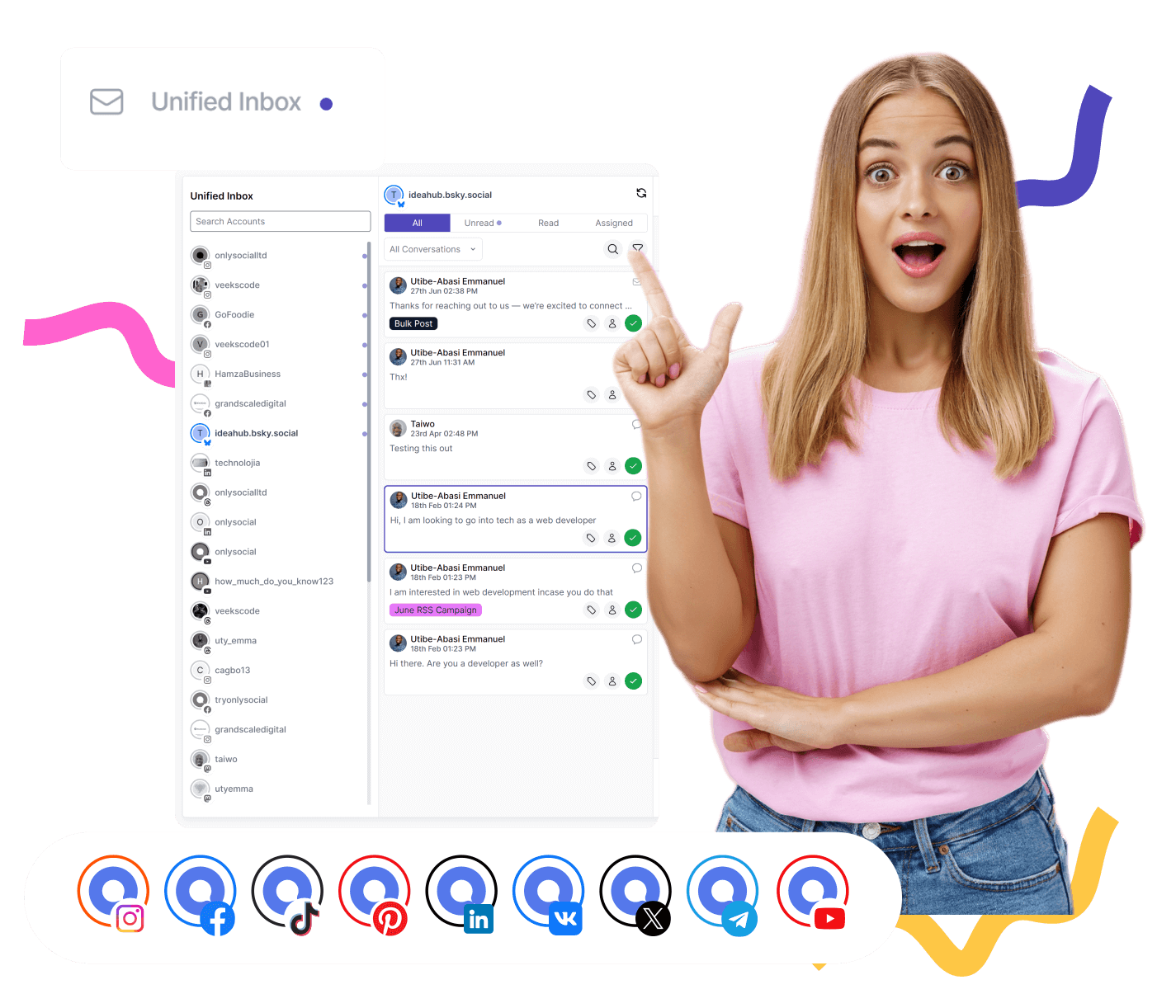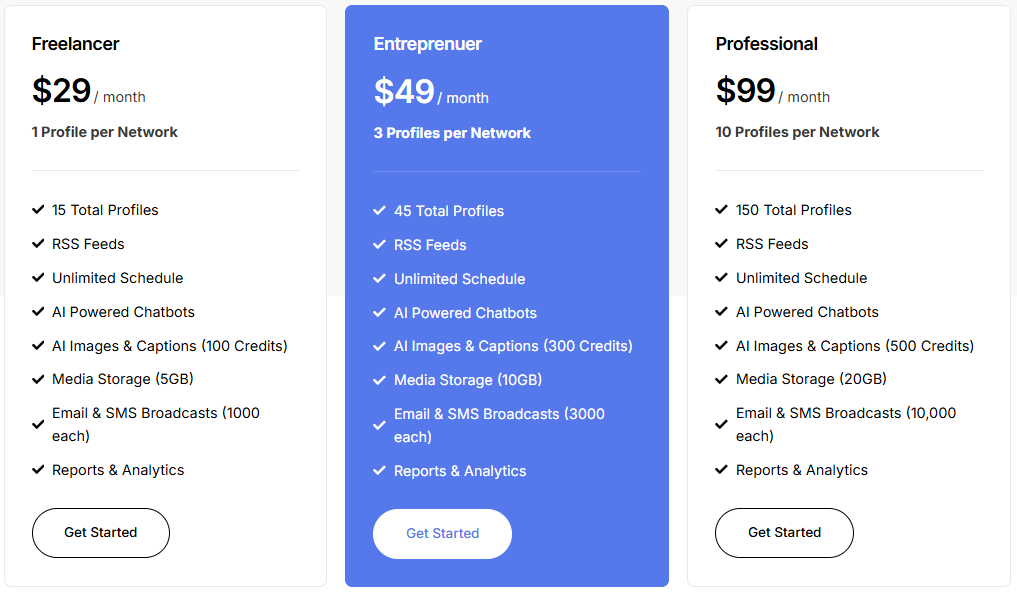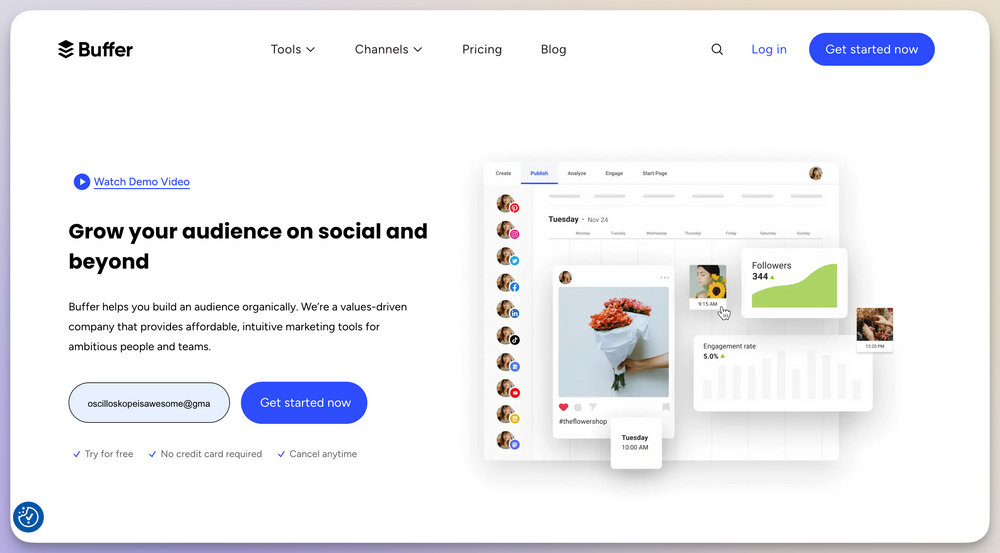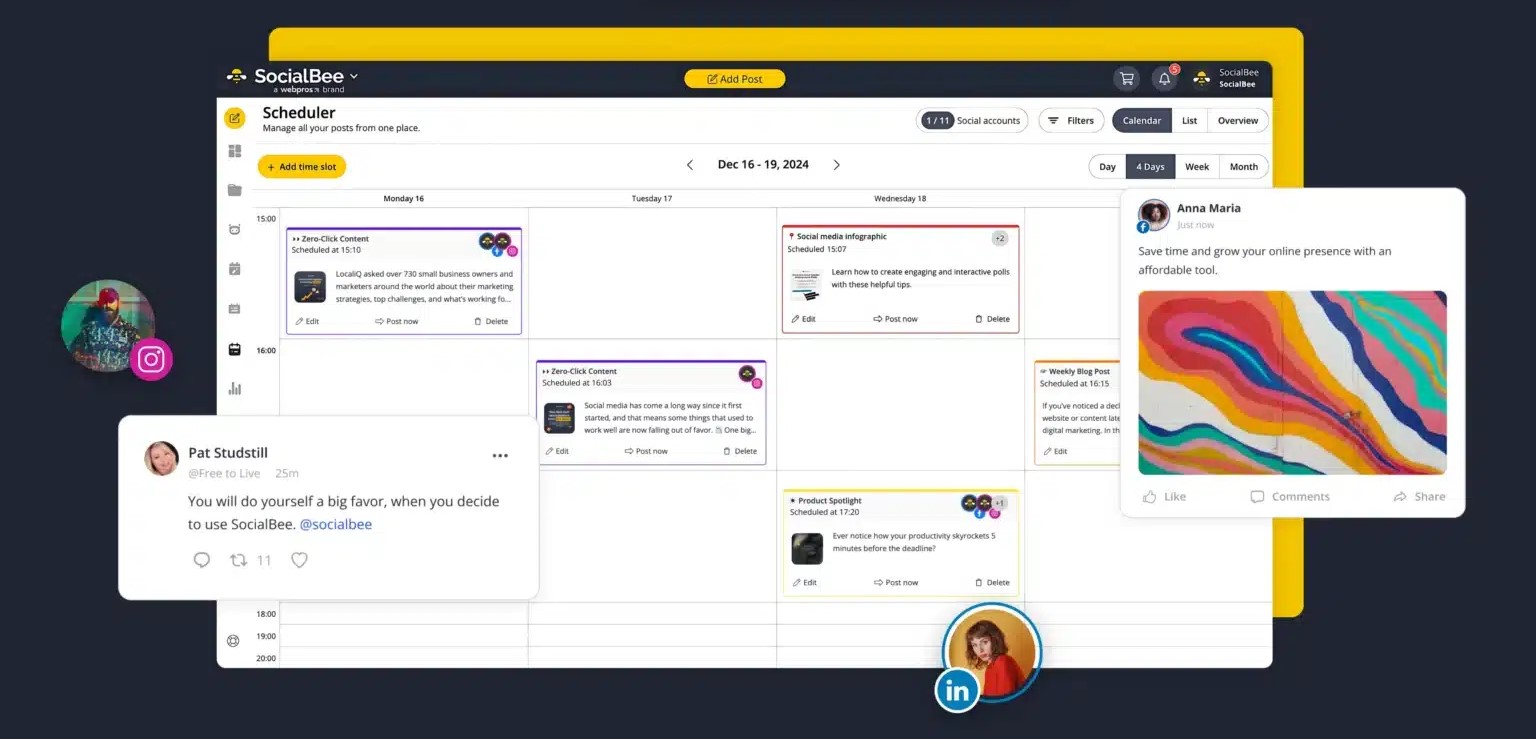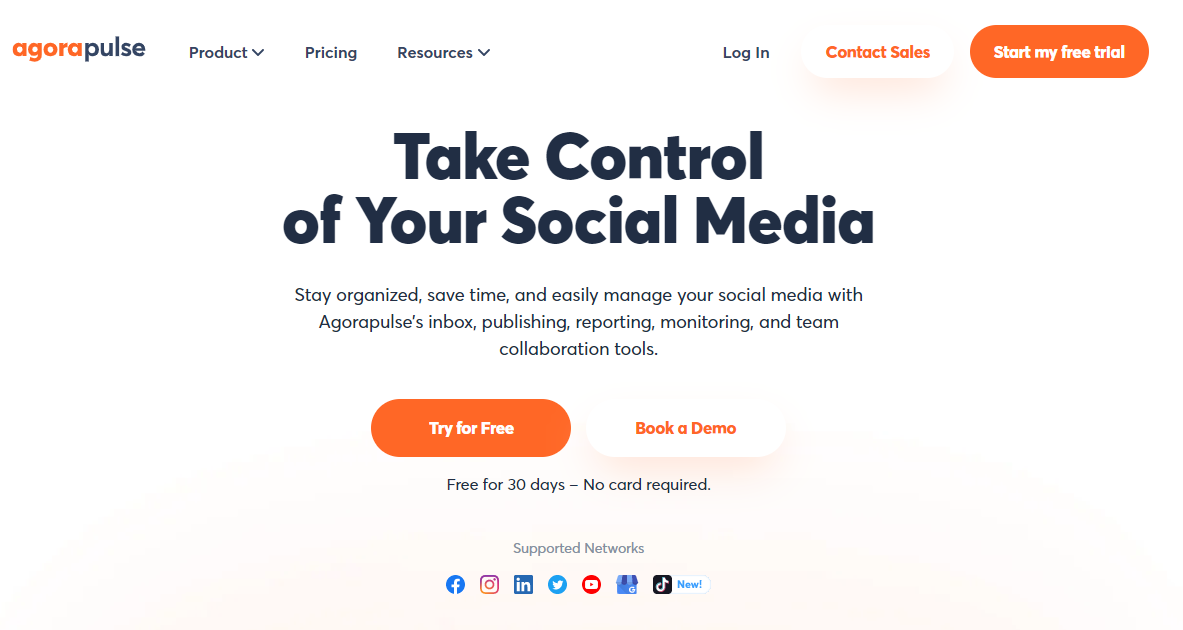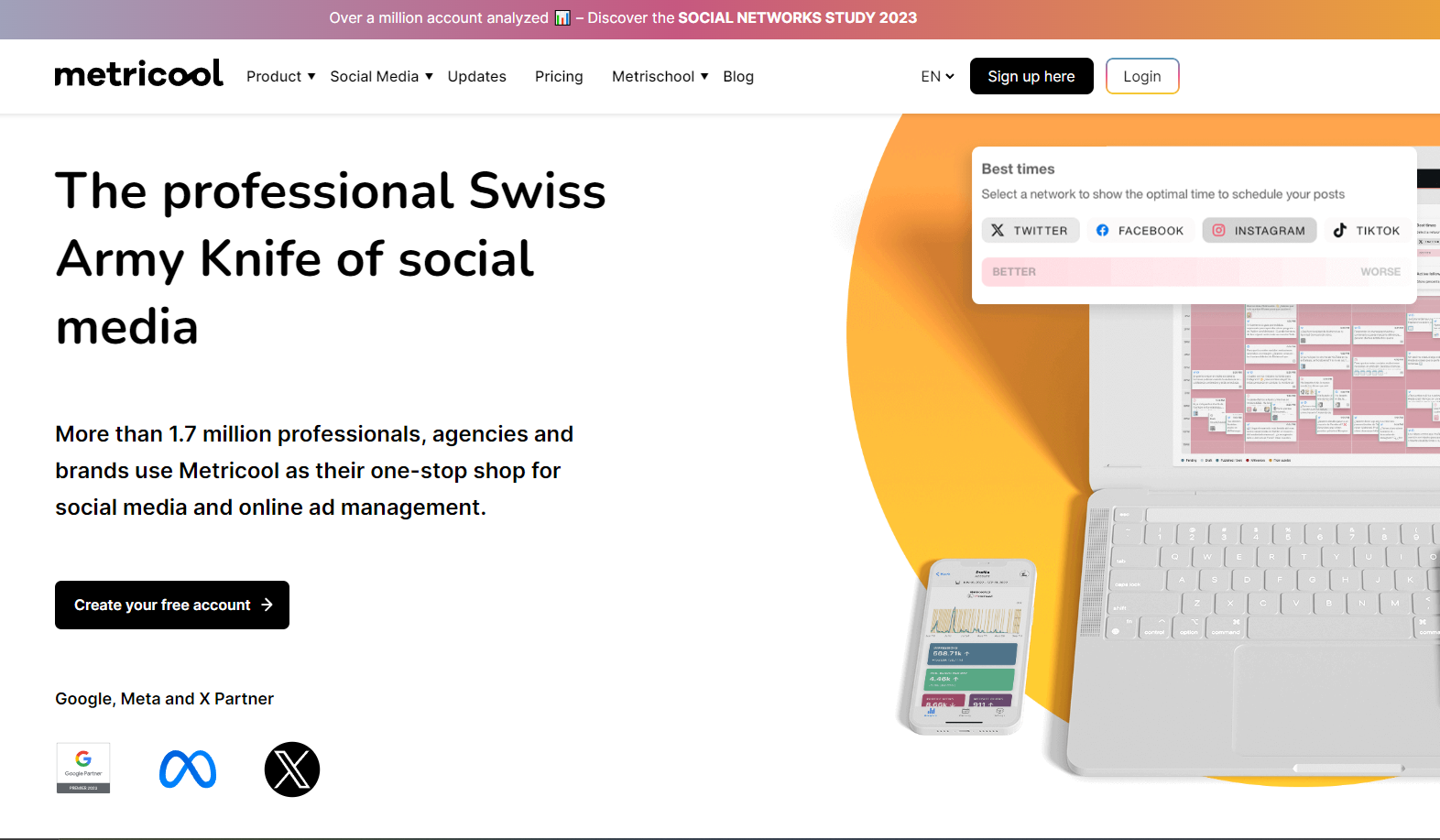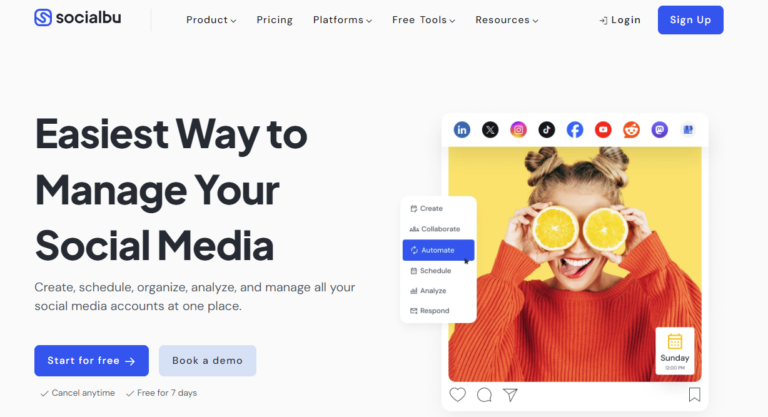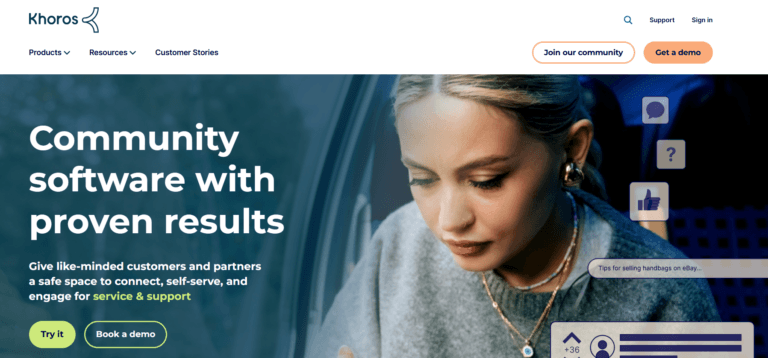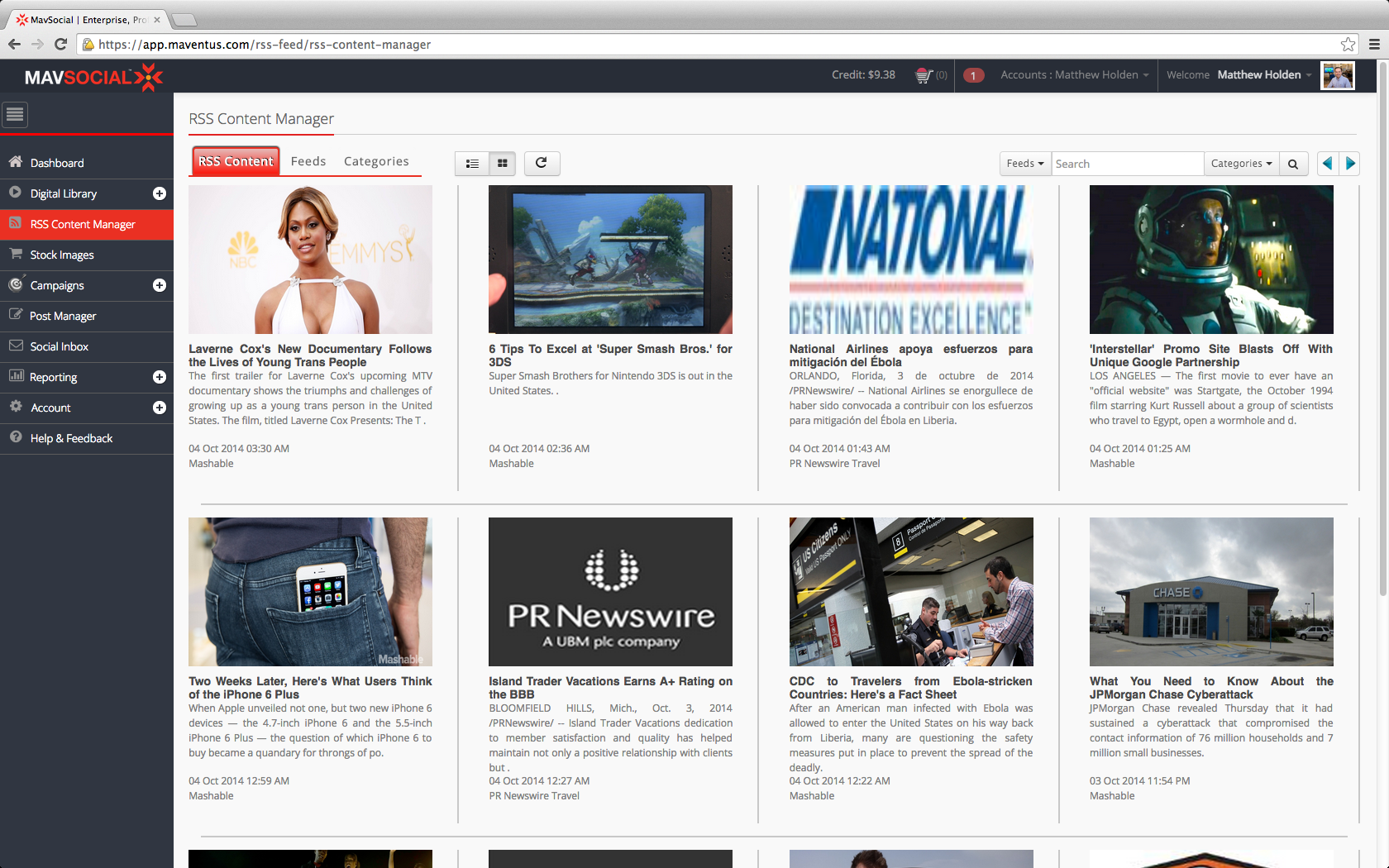Top 10 CrowdFire Alternatives for Brands and Agencies

Crowdfire is out. Now what?
After more than a decade of helping businesses schedule, curate, and manage their social media like pros, Crowdfire has officially signed off.
Yep, the tool that once lived on the dashboards of freelancers, agencies, and busy marketers everywhere waved goodbye in May 2025. Tough break, right?
But here’s the thing: just because Crowdfire shut its doors doesn’t mean your content calendar has to go dark.
Social media’s still buzzing, and brands still need smart tools to keep up with the pace. The good news is that there are some seriously impressive CrowdFire alternatives out there – tools that go beyond the basics and actually help you grow.
Whether you’re a brand juggling five platforms or an agency handling twenty clients, this list is your new go-to. We’ve rounded up the top 8 alternatives to CrowdFire, based on features, value, and how well they play with your daily workflow.
(Spoiler: yes, our very own OnlySocial made the cut – and for good reason.) Let’s dive in and find the one that fits your brand best.
Table of Contents
- 1 How to Pick the Right CrowdFire Alternative for You
- 2 Top Crowdfire Alternatives to Consider in 2025
- 3 1. OnlySocial – All-in-One Power for Brands and Agencies
- 4 2. Sendible – Built for Agencies, Teams, and Getting Serious
- 5 3. Buffer – Simple, Clean, and Surprisingly Powerful
- 6 4. SocialBee – Content-First and Built for Consistency
- 7 5. Agorapulse – For Teams Who Live in the Inbox
- 8 6. Loomly – Structure, Strategy, and Collaboration in One Place
- 9 7. Metricool – For the Data-Obsessed Marketer
- 10 8. SocialBu – Affordable, Automated, and Surprisingly Powerful
- 11 9. Khoros – For Enterprises That Want to Do Social Media at Scale
- 12 10. MavSocial – Media-First Social Scheduling for Visual Brands
- 13 Ready for a Better Crowdfire Alternative? Try OnlySocial
- 14 FAQs
- 14.0.1 What is Crowdfire used for?
- 14.0.2 How much does Crowdfire cost?
- 14.0.3 What are some key features to look for in Crowdfire alternatives?
- 14.0.4 How important is user interface in selecting a Crowdfire alternative?
- 14.0.5 Does OnlySocial, as a Crowdfire alternative, support multiple social media platforms?
How to Pick the Right CrowdFire Alternative for You
Not sure where to start now that Crowdfire is out of the picture? Don’t worry, you’re not alone.
With so many social media tools out there, it can feel like you’re choosing from a never-ending buffet. But here’s how to keep things simple and find the one that works best for you.
Look at the Features
Think about what you really need. Do you want to schedule posts, check how your content is doing, or find new ideas to post?
Make sure the tool can do those things without making it complicated. Some even offer smart extras like suggesting the best time to post or helping you find top hashtags.
Know Your Budget
There are free tools out there, but they often come with limits. If you need more features, you’ll probably need to pay a bit.
That’s fine, as long as the tool gives you good value. The best tools help you save time and grow your social media without costing a fortune.
Make Sure It Works with Your Platforms
If you’re posting on Instagram, LinkedIn, X (Twitter), or others, check that the tool works with all of them. It should also fit nicely into your current setup. No need to change everything just to make it work.
Go for a Good User Experience
A good tool should be easy to use. You shouldn’t need a manual or a tech degree to figure things out. And if you ever get stuck, it’s great to have helpful support – whether that’s live chat, tutorials, or a quick email reply.
Now that you know what to look for, let’s check out the top 8 tools that can step in where Crowdfire left off.
Top Crowdfire Alternatives to Consider in 2025
1. OnlySocial – All-in-One Power for Brands and Agencies
If you’re looking for a social media management tool that actually does it all, you should check out OnlySocial. The tool is designed with small businesses, growing agencies, startups, and influencers in mind. It’s simply built to make your social media life easier – not harder.
While Crowdfire helped many get started, OnlySocial is the platform that helps you scale. From planning and publishing to engaging and analyzing, it’s all under one roof, with a user-friendly dashboard that feels more like a co-pilot than a tool.
Let’s take a look at why OnlySocial tops the list.
Key Features of OnlySocial
Advanced Multi-Platform Scheduling
OnlySocial supports scheduling across over 15 social platforms, including the big players like Facebook, Instagram, TikTok, LinkedIn, YouTube, and even newer ones like Threads and Bluesky.
You can manage it all from one clean, unified dashboard, perfect whether you’re handling a single brand or juggling a dozen.
Visual Calendar Plus Bulk Upload
The visual calendar lets you plan weeks (or months) of content at a glance. And if you’re dealing with hundreds of posts? Use the bulk scheduling feature to upload everything in one go. It’s a lifesaver for agencies managing multiple accounts.
Smart, Actionable Analytics
Forget useless metrics. OnlySocial’s dashboard gives you deep, meaningful insights into what’s working – and what’s not. From audience engagement to post performance, you’ll get the info you need to tweak your strategy without the guesswork.
AI-Powered Content Assistant
Stuck on what to post? Let OnlySocial’s AI assistant do the heavy lifting. It helps you write captions, find hashtags, suggest images, and even tailor your tone based on your audience. It’s like having a creative sidekick that never takes a day off.
Unified Social Inbox
No more bouncing between apps. OnlySocial’s unified inbox pulls in DMs, comments, and mentions from all your platforms – yes, even WhatsApp Business, so you can reply fast, stay on top of conversations, and never miss a message again.
Team-Friendly Collaboration
If you work with a team, you’ll love this. Assign roles, manage approvals, leave internal notes, and keep content organized with a shared library. Everyone stays in sync without endless back-and-forth on email or Slack.
Built-in Integrations That Make Sense
You can connect your favorite tools directly inside OnlySocial. Think about tools like Adobe Express, Bit.ly, OpenAI, and more. Everything works together so you can stay in flow without jumping between tabs.
Pricing and Value
Let’s talk money because great tools are even better when they don’t break the bank.
Crowdfire’s Plus Plan used to charge $49.99/month for just 5 social accounts. That’s not exactly generous.
Compare that with OnlySocial, where $29/month gets you 15 social media accounts. That’s three times the profiles for a lot less cash. And it’s not just about the numbers – you’re also getting better features, more flexibility, and a smoother experience.
Here’s how the plans stack up:
- Freelancer Plan – $29/month for 15 accounts
- Entrepreneur Plan – $49/month for 45 accounts and 3 users
- Professional Plan – $99/month for 150 accounts and 10 users
For what it offers, OnlySocial is one of the best-priced tools on the market, especially if you’re looking to scale without splurging.
OnlySocial vs. Crowdfire
So, how does OnlySocial compare to the now-retired Crowdfire?
Well, Crowdfire was great for beginners, especially if you just needed basic content curation and simple analytics. But as soon as you wanted to manage multiple brands or run serious campaigns, things got a little… limited.
OnlySocial, on the other hand, is built for growth. It gives you all the tools you need to manage, publish, track, and collaborate across more platforms – all at a better price point. Think of it as Crowdfire’s older, wiser, and more productive cousin.
Planning content is also fun (yes, fun) with OnlySocial. Thanks to its clean, drag-and-drop visual calendar. You can plan weeks ahead, move posts around easily, and never lose track of what’s going live.
One feature we loved is the RSS Feed Automation. It pulls in fresh content from your niche automatically – perfect if you want to mix in curated posts without wasting hours scrolling the web.
And then there’s the AI Assistant. This is a lifesaver for busy marketers. It helps with captions, hashtags, images, and even tailors your content to each platform. Crowdfire offered some suggestions, sure, but this feels like having your own little creative team on standby.
Also, thanks to Adobe Express integration, creating scroll-stopping visuals takes minutes, not hours. No more bouncing between apps. Everything happens right inside the dashboard.
If you’re looking for a Crowdfire replacement that can actually do more and do it better, OnlySocial is a perfect option.
2. Sendible – Built for Agencies, Teams, and Getting Serious
If your social media setup involves multiple clients, brand guidelines, and more Slack messages than you can count, Sendible might just be your new best friend.
Designed with agencies and larger teams in mind, Sendible is one of the more powerful Crowdfire alternatives out there. It goes beyond basic scheduling by focusing heavily on collaboration, client management, and in-depth reporting.
In short, it’s made for the pros who need more than just a place to queue posts.
Whether you’re managing five brands or fifty, Sendible gives you the structure and tools to keep everything organized without needing a spreadsheet to track your content.
Key Features
- Client Connect: No more sharing passwords! This feature lets clients securely connect their accounts while you stay in full control of what they see and do.
- Smart Team Collaboration: Assign roles, delegate approvals, and share brand assets in a way that actually makes sense.
- Unified Social Inbox: Everything – comments, DMs, mentions – lands in one place so your team can respond quickly and efficiently.
- Social Listening Tools: Get alerts when people mention your brand, your competitors, or keywords you care about. It’s like having radar for social media.
- Post Recycling & Queues: Got evergreen content? Let it work harder with smart reposting options to keep your best content in front of fresh eyes.
- Instagram First Comment: Schedule hashtags and extra info in the first comment to keep your captions clean and your reach strong.
- Content Library: Store templates, graphics, hashtags, and more for quick reuse across campaigns and clients.
- Loads of Integrations: From WordPress and Google Drive to Dropbox and more, it fits right into your existing workflow.
Sendible vs. Crowdfire
While Crowdfire was great for solo creators or small businesses needing quick scheduling and curated content, Sendible takes things to the next level.
It’s built for teams that work with multiple clients or brands, and it shows, especially in the white-label dashboard, custom reports, and advanced collaboration tools.
The ability to manage permissions, streamline communication, and organize brand assets all in one place makes it a strong choice for serious marketing teams.
If Crowdfire felt like a comfy starter kit, Sendible is the upgrade for when you’re ready to scale, and scale smart.
3. Buffer – Simple, Clean, and Surprisingly Powerful
Sometimes, less really is more. If you’re after a tool that’s easy to use, easy on the eyes, and still gets the job done, Buffer might be the perfect fit.
Buffer has been around for a while, and with good reason. It’s designed for individuals, small businesses, and growing teams who want to manage their social media without getting overwhelmed.
Unlike some tools that feel like you need a tutorial just to schedule one post, Buffer keeps things clean, clear, and super user-friendly.
If you have been looking for a simple replacement for Clowdfire, you should give Buffer a try!
Key Features You’ll Love
- Minimal, Easy-to-Use Interface: Buffer’s dashboard is as clean as they come. Everything is right where you’d expect it, so you can jump in and get started without a learning curve.
- Instagram First Comment Scheduling: Keep your captions tidy and toss your hashtags or extra details in the first comment – automatically.
- Queue-Based Scheduling: Set your preferred posting times once, then just drop new content into the queue and let Buffer handle the rest.
- Simple Yet Insightful Analytics: Quickly see how your posts are performing without getting lost in a sea of data. Great for busy users who just want the highlights.
- Content Strategy Guidance: Find out which posts are doing best so you can make more of what works – and less of what flops.
- Wider Platform Support: Buffer goes beyond the basics with support for TikTok, Bluesky, Mastodon, Threads, and more – all from one tool.
- Generous Free Plan: Connect up to 3 social accounts, even on the free tier – already more flexible than Crowdfire’s one-per-platform limit.
Pricing
Buffer keeps things flexible, especially for small teams or solo users.
- Free Plan: Connect up to 3 social channels with 10 scheduled posts per channel – perfect for testing the waters.
- Essentials Plan: Starts at $6/month per channel, great for individuals who need more scheduling and insights.
- Team Plan: Starts at $12/month per channel and includes team collaboration tools.
- Agency Plan: Starts at $120/month for 10 channels, built for larger teams or agencies managing multiple brands.
The “per channel” pricing model means you only pay for what you need, and that’s a win if you’re watching your budget.
Buffer vs. Crowdfire
Crowdfire had its moments, especially with content curation and tracking what competitors were doing. But for those who just want a reliable tool that’s easy to use, Buffer takes the crown.
Its intuitive layout, flexible posting options, wider platform support, and better free plan make it an excellent choice for solo users, side hustlers, and small teams that want to stay consistent without all the noise.
If you’re the type who likes to keep things simple (but still smart), Buffer is a solid Crowdfire alternative. It won’t overwhelm you with features you don’t need, but it’ll help you stay on track, stay visible, and keep your content rolling out on time.
4. SocialBee – Content-First and Built for Consistency
SocialBee is another amazing tool you will want to consider when looking for Crowdfire alternatives. The tool is all about helping you stay organized, save time, and post with purpose.
It’s especially popular with marketers and growing businesses that want to scale their content efforts without losing control or burning out.
Unlike Crowdfire, which kept things pretty basic, SocialBee brings in smarter tools like AI-generated strategies, advanced scheduling, and deep content categorization, so your social media doesn’t just survive but thrives.
Key Features That Stand Out
- AI-Powered Content Creation: SocialBee’s built-in AI can help you craft posts and even map out full content strategies. You can adjust tone, length, and add visuals – all in one place.
- Smart Content Categorization: Want to keep your evergreen, promotional, and seasonal content separate? You can create categories, set rules, and even auto-recycle posts based on their type.
- Post Recycling: SocialBee lets you keep high-performing content in rotation and automatically retire posts when they’re no longer relevant.
- Instagram First Comment Scheduling: Perfect for dropping those hashtags or extra details without cluttering your captions.
- Engagement & Monitoring Streams: Manage mentions, DMs, and comments across platforms in one spot – with team notes to help streamline collaboration.
- Detailed Analytics & Reports: See what content is working, break it down by category, and access up to 2 years of post history. This is great for spotting trends and planning smarter.
Pricing & Value
SocialBee keeps things fairly priced while offering plenty of value-packed features.
- Bootstrap Plan – $24/month for solopreneurs managing a few profiles
- Accelerate Plan – $40/month for small teams that need more automation
- Pro Plan – $82/month for larger businesses with more accounts and team members
Each plan gives you access to powerful scheduling, AI tools, and category-based organization – something you’d have to piece together with multiple tools elsewhere.
SocialBee vs. Crowdfire
While Crowdfire was decent for casual scheduling and content discovery, SocialBee takes things to another level.
It’s built for users who care about structure, strategy, and scaling. From AI-generated content plans to post recycling and smart scheduling, SocialBee gives you more control over what you post, when you post it, and why it matters.
Crowdfire lacked this level of flexibility and depth, making it feel more like a starter tool. SocialBee, on the other hand, is for those ready to take their content game seriously.
5. Agorapulse – For Teams Who Live in the Inbox
If you’re handling high volumes of messages, managing multiple clients, or just tired of jumping between platforms to reply to comments, Agorapulse is a perfect tool to consider as Crowdfire replacement.
Built with agencies, brands, and growing teams in mind, Agorapulse puts a huge focus on engagement, team workflows, and in-depth reporting.
It’s not just about scheduling; it’s about managing conversations, keeping teams in sync, and showing clients the real impact of your work.
While Crowdfire gave you the basics, Agorapulse delivers the full professional toolkit.
Key Features That Matter
- Unified Social Inbox: All your DMs, comments, mentions, and reviews in one place – complete with filters, labels, and assignments.
- Inbox Assistant: Automatically sort, label, or assign messages so your team can respond faster and stay organized.
- Bulk Scheduling: Plan and upload a ton of content at once. This is a perfect feature for busy agencies.
- Powerful Social Listening: Track keywords, brand mentions, and even what your competitors are up to.
- Team Performance Reports: See how quickly and efficiently your team is handling engagement.
- Advanced Analytics: Dive deep into what’s working across platforms, including paid vs. organic performance.
- Ad Comment Moderation: Stay on top of Facebook ad conversations without leaving the platform.
Pricing & Value
Agorapulse’s plans start at $79/month, with more tailored options available for agencies and enterprises. It’s not the cheapest tool out there, but it earns its price tag with powerful features and serious team support.
Agorapulse vs. Crowdfire
Crowdfire is fine for small-scale users, but it lacks the depth needed for managing large volumes of content or conversations.
Agorapulse shines where Crowdfire falls short, especially in inbox management, reporting, and collaborative tools. If your team needs to stay on top of messages, streamline approvals, and show clients real results, this tool is built for you.
6. Loomly – Structure, Strategy, and Collaboration in One Place
Loomly is another social media management tool you will love if your team fancies a good calendar, clear workflows, and needs to keep brand voice consistent across channels.
Loomly is ideal for marketing teams and content creators who want a platform that’s focused on planning and collaboration. It takes a calendar-first approach, making it super easy to plan, preview, and approve posts before they go live.
Compared to Crowdfire, Loomly is more structured and process-driven, perfect for teams who need to stay aligned and on-brand.
Key Features You’ll Appreciate
- Centralized Content Calendar: Plan and schedule everything in one place, with structure, labels, and deadlines built in.
- Post Ideas Generator: Get inspiration from trends, holidays, and RSS feeds when you’re short on ideas.
- Step-by-Step Post Builder: Loomly guides you through creating each post with previews for every platform.
- Approval Workflows: Collaborate, leave comments, and get the green light before publishing.
- Media Asset Library: Store and organize photos, videos, templates, and more with tags for easy reuse.
- Real-Time Post Previews: See exactly how your post will look before it goes live.
- Analytics & Performance Metrics: Get clear, visual insights into what’s working and what’s not.
- Ad Integration: Set up and manage Facebook ads without leaving the platform.
- Team-Friendly Integrations: Connect with Slack, Microsoft Teams, and Zapier to keep your workflow smooth.
Pricing & Value
Loomly doesn’t display pricing publicly anymore – you’ll need to reach out for a quote. That said, it offers multiple tiers suited for small teams to larger agencies, depending on how many users and features you need.
Loomly vs. Crowdfire
Crowdfire focused on content curation and basic post scheduling, but Loomly is made for team collaboration and brand consistency.
From structured calendars and built-in approval processes to real-time previews and media management, Loomly helps teams move efficiently and stay on the same page.
If you’re working with multiple people or brands and need more control, it’s a clear upgrade from Crowdfire’s simpler setup.
7. Metricool – For the Data-Obsessed Marketer
If you’re the type who loves diving into numbers, charts, and performance trends, Metricool might just become your new best friend.
Unlike Crowdfire, which puts more weight on content creation and curation, Metricool is all about the data. It helps you see exactly what’s working, what’s not, and how to fine-tune your social media (and even ads) for better results.
This one’s made for people who like to measure twice and post once.
Key Features of Metricool
- All-in-One Dashboard: Keep an eye on all your organic and paid metrics in one place, including social, website, and ads.
- In-Depth Analytics & Reports: Download PDF or CSV reports, customize templates, and create polished presentations that’ll make you look good in front of clients.
- Competitor Tracking: See how your rivals are performing across platforms and adjust your game plan accordingly.
- Live Monitoring: Track your website traffic and social engagement in real time.
- Smart Scheduling: Use bulk uploads, looping content queues, and AutoLists to stay consistent without constantly logging in.
- Built-in Ad Management: Run and monitor your Google Ads and Facebook Ads right from Metricool – no extra tabs needed.
- Social Inbox: Reply to comments and messages across TikTok, Instagram, and more in one central place.
Pricing & Value
Metricool’s paid plans start at $18/month, scaling based on how many brands or team members you need to support. It’s ideal if you’re managing a few clients or want sharper insights into your campaigns.
Metricool vs. Crowdfire
if you’re serious about analytics, competitive research, and ads, Metricool is in another league compared to Crowdfire.
It gives you a complete view of your digital presence and helps you fine-tune every piece of your strategy. This makes the tool perfect for agencies, strategists, and data-loving marketers who want more than just the basics.
8. SocialBu – Affordable, Automated, and Surprisingly Powerful
SocialBu might not be as well-known as some of the other tools on this list, but it’s a hidden gem, especially if you want automation, smart scheduling, and solid engagement tools without the high price tag.
Built for solo creators, startups, and small teams, SocialBu offers a lot more under the hood than you’d expect, especially when you compare it to Crowdfire’s more limited setup.
Key Features That Make It Shine
- Unified Inbox: Manage all your messages, comments, and replies across platforms in one clean view.
- Automation Workflows: Auto-reply, auto-like, auto-post—you name it. SocialBu saves time by handling repetitive tasks for you.
- Visual Scheduler: Drag and drop posts on a calendar to see your whole content plan at a glance.
- Instagram Tools: Schedule stories, carousels, and first comments directly – something Crowdfire never offered.
- AI Content Generator: Stuck on what to say? Let SocialBu write captions, suggest hashtags, and spark ideas for you.
- Canva Integration: Design eye-catching visuals without leaving the platform.
- Custom Post Variations: Tailor each post for different platforms in a single workflow.
- Analytics Dashboard: Track reach, engagement, and post performance with easy-to-read reports.
- RSS Feed Posting: Automatically share new blog posts or news from your favorite sites.
- Team Collaboration Tools: Set roles, manage approvals, and streamline teamwork.
Pricing & Value
SocialBu’s pricing starts at just $15.80/month, making it one of the most affordable tools on this list, especially for the features you get. A free trial is also available if you want to test-drive it before committing.
SocialBu vs. Crowdfire
If you’re looking to discover content ideas and publish more seamlessly, Crowdfire will do that fine. But SocialBu takes things further with automation, inbox management, and smarter scheduling.
It’s a time-saver, a budget-saver, and a solid pick if you want a powerful tool without the steep learning curve or big price tag. Especially great for creators and small businesses ready to level up without overspending.
9. Khoros – For Enterprises That Want to Do Social Media at Scale
Are you managing social for a large business or enterprise and need a tool that can handle high volumes of conversations, approvals, and deep insights? Khoros might just be what you’re looking for.
Khoros goes beyond basic scheduling. It’s designed to connect with customers at scale, bringing together publishing, listening, and engagement in one powerful platform.
Unlike Crowdfire, which focuses on individual users and small teams, Khoros is built for structured workflows, sentiment tracking, and CRM-level customer care.
This isn’t just a social media tool; it’s more like a command center for brand communication.
Key Features to Know
- Content Publishing & Scheduling: Plan, post, and manage content across multiple platforms with full approval workflows.
- Community Management Tools: Engage with your audience and monitor discussions to build stronger relationships.
- CRM Integration: Connect social interactions to your customer service and support systems for seamless engagement.
- Social Listening: Track keywords, mentions, and sentiment to stay ahead of what your audience is saying.
- Custom Reports: Access detailed insights and metrics that help shape strategy.
- Collaboration Support: Assign team roles, manage tasks, and streamline publishing processes for larger teams.
Khoros vs. Crowdfire
No doubt, Crowdfire is a perfect fit if you’re a solo marketer looking for content ideas and basic scheduling. But if you’re running a multi-person team in a large organization, you’ll likely outgrow it fast.
Khoros offers enterprise-level tools like social listening, CRM integrations, approval workflows, and advanced analytics.
It’s made for companies that treat social media as a serious part of their customer journey, not just a content channel.
10. MavSocial – Media-First Social Scheduling for Visual Brands
This is for brands and businesses that are big on visuals and manage lots of photos, videos, or branded graphics. If this also sounds like you, MavSocial is a strong Crowdfire alternative to consider.
It’s built with media-heavy teams in mind – those who need to schedule content but also store, manage, and reuse lots of assets. With one dashboard, you can schedule posts, check analytics, respond to your audience, and keep your creative assets organized.
Compared to Crowdfire’s simplicity, MavSocial adds a more structured, media-forward approach that works well for brands, agencies, and visual storytellers.
Key Features That Stand Out
- Cross-Platform Scheduling: Publish to multiple social platforms from one easy interface.
- Digital Asset Management: Store and tag images, videos, and branded content for quick reuse.
- Bulk Scheduling: Upload and queue lots of posts at once, ideal for campaign planning.
- Social Listening Tools: Track brand mentions, keywords, and trends to stay informed.
- Team Collaboration: Set roles, manage approvals, and keep your content workflow on track.
- Performance Reports: Visualize engagement, reach, and audience behavior to improve results.
Pricing & Value
MavSocial offers plans starting at $29/month, making it an affordable choice for teams that need strong publishing tools with built-in media organization.
MavSocial vs. Crowdfire
Crowdfire is strong when it comes to content discovery and basic post scheduling, especially for users who want to keep things simple.
MavSocial, on the other hand, is perfect for teams that work with lots of media and need a better way to manage visual assets.
If your social media strategy is highly visual – think product images, video campaigns, branded graphics, MavSocial offers the structure and tools Crowdfire simply doesn’t.
Ready for a Better Crowdfire Alternative? Try OnlySocial
At the end of the day, there’s no one-size-fits-all tool for managing your social media. It all comes down to what your business really needs. Is it stronger automation, deeper analytics, better collaboration, or just a smoother way to post consistently?
Sure, Crowdfire helped many users get started with social media. But with so many powerful alternatives out there now, you’ve got options that can do a whole lot more – and do it better.
And if you’re after a tool that balances ease of use with powerful features, OnlySocial is built for you. With support for over 15 platforms and other amazing features, it gives you everything you need to grow your presence without the stress.
So take a moment, think about what matters most to your brand, and choose the tool that ticks all the right boxes.
FAQs
What is Crowdfire used for?
Crowdfire is a social media management tool that helps users schedule posts, discover content, and track performance across different platforms.
It’s mostly known for its content curation features and simple publishing tools, making it a handy choice for individuals or small businesses looking to keep their feeds active.
How much does Crowdfire cost?
Crowdfire offers a free plan with limited features, but its paid plans start at around $9.99/month and can go up to $49.99/month for more advanced features like analytics and multiple account connections. However, compared to other tools, its pricing often feels a bit steep for what you actually get.
What are some key features to look for in Crowdfire alternatives?
When exploring alternatives, it’s good to look for features that match your workflow and goals. These might include:
- Support for multiple social platforms
- Visual content calendar and bulk scheduling
- AI-powered content tools
- In-depth analytics and reporting
- Unified inbox for messages and comments
- Team collaboration tools
- Automation workflows
The right mix depends on your team size, content needs, and how much time you want to save.
How important is user interface in selecting a Crowdfire alternative?
Very important! A clean, easy-to-navigate interface can save you hours of frustration. You want a tool that helps you get things done quickly, not one that makes you feel like you need a training course to schedule a post.
Yes, it does – and then some. OnlySocial supports over 15 major social platforms, including Facebook, Instagram, TikTok, LinkedIn, YouTube, Twitter (X), Google Business Profile, Threads, Bluesky, and even WhatsApp Business.
It’s perfect for anyone managing several brands or trying to maintain a consistent presence across multiple networks.
